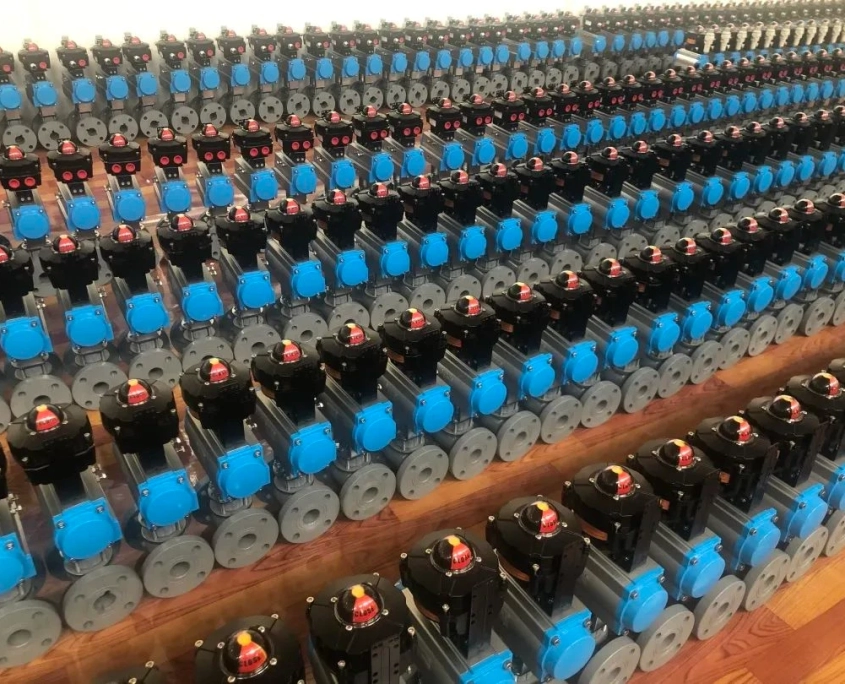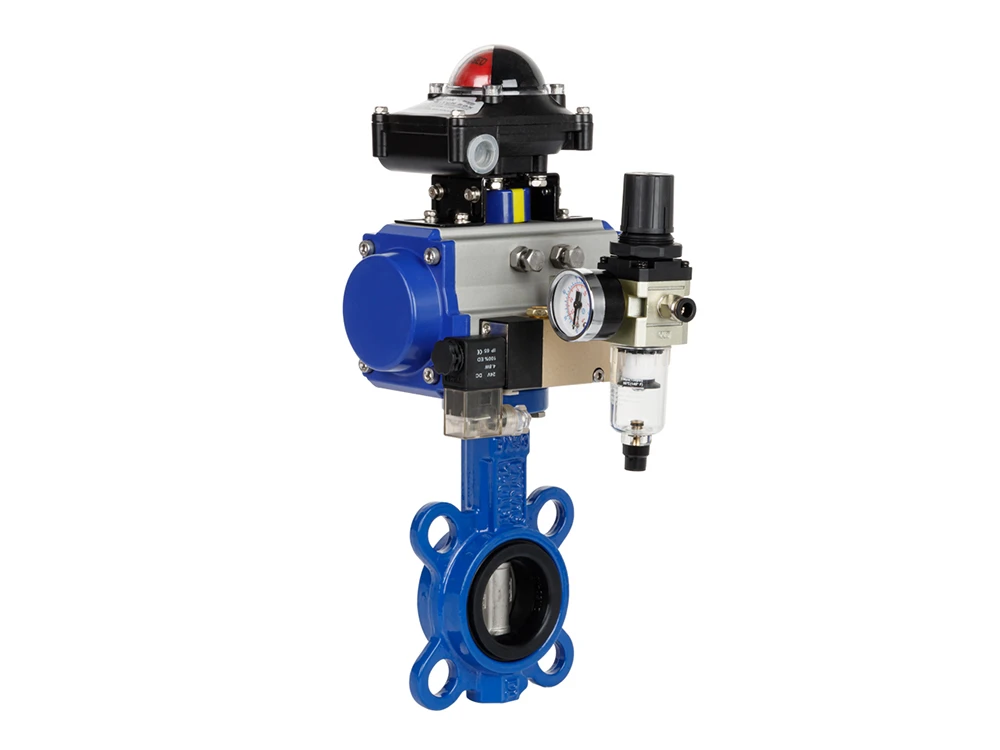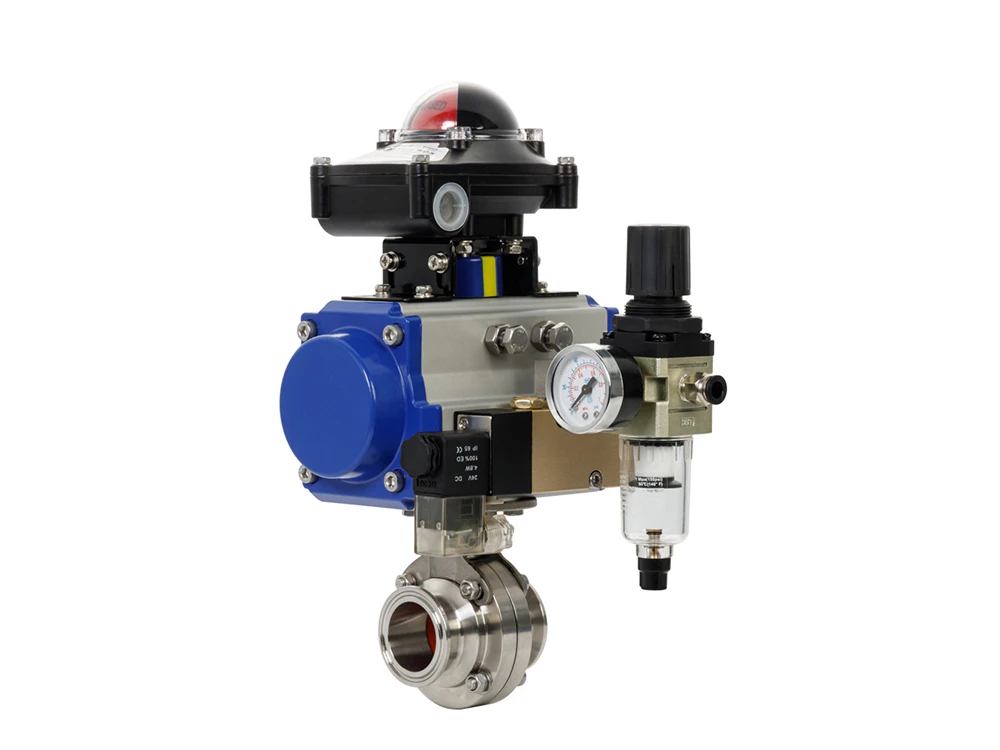Electric Actuated Valve VS Pneumatic Actuated Valve
With the progress of the times and continuous reforms, my country’s valve products have also innovated with the changes of the times. Currently, in the valve market where environmental protection and safety are increasingly vocal, the use of automatic control devices such as electric valves and pneumatic valves has gradually become indispensable. of. The use of automatic control valves is more energy-saving safer and more reliable. Compared with traditional manual valves, it moves faster than ordinary valves, which not only reduces manual manpower but also greatly improves work efficiency.
Overview of Pneumatic Actuated Valves
A pneumatic valve is an actuator that uses compressed air to drive and operate the valve. Its opening and closing speed is relatively fast, and it is often used for rapid two-position cut-off. Since it mainly relies on the air source to perform operations, it is necessary to install explosion-proof or explosion-proof devices. Finally, it can be used in flammable and explosive situations. It has high practicability and can be used to operate various corrosive media in liquid form. The accessories in pneumatic valves are varied and can be used to achieve a variety of different needs with different accessories. With the same control method, users can make corresponding configurations according to the different working needs of the valve.
Overview of Electric Actuated Valves
Electric valves are usually connected by an electric actuator and a valve and become electric valves after installation and debugging. The electric valve uses electric energy as power to connect the electric actuator to drive the valve to realize the switching and regulating actions of the valve. To achieve the purpose of switching the pipeline medium or adjusting the flow. The operating force distance of the electric valve is larger than that of ordinary valves. The switching speed of the electric valve can be adjusted. The structure is simple and easy to maintain. It can be used to control the flow of liquid fluids.
Advantages of Electric Valve vs Pneumatic Valves
The advantages of pneumatic actuators mainly include the following four points:
(1) Large load, suitable for applications with high torque output.
(2) Quick action and quick response.
(3) It has good adaptability to the working environment, especially in harsh working environments such as flammable, explosive, dusty, strong magnetism, radiation, and vibration, and is superior to hydraulic, electronic, and electrical controls.
(4) There is no need to install and maintain various pneumatic pipelines.
The advantages of electric actuators mainly include the following five points:
(1) Compact structure and small size. Compared with pneumatic actuators, the structure of electric actuators is relatively simple. A basic electronic system includes an actuator, a three-position DPDT switch, a fuse, and some wires, which is easy to assemble.
(2) The driving source of electric actuators is very flexible. Generally, ordinary alternating current AC-220V; AC-380V, and direct current DC-24V can meet the needs, while pneumatic actuators require an air source and compression drive device.
(3) The load can be maintained without power.
(4) Electric actuators are quieter because no additional pressure device is required.
(5) Electric actuators are superior in control accuracy.
Summarize Electric Actuated Valves vs Pneumatic Actuated Valves
Pneumatic and electric systems are not mutually exclusive.
Pneumatic actuators can easily realize rapid linear cyclic motion, have a simple structure, and are convenient to maintain. They can also be used in various harsh working environments, such as explosion-proof requirements, and dusty or humid working conditions.
Electric actuators are mainly used in applications that require precision control. Flexibility requirements in automation equipment are constantly increasing. The same equipment is often required to adapt to the processing needs of workpieces of different sizes. The actuator needs to perform multi-point positioning control, and the actuator must be Precise control or synchronous tracking of operating speed and torque cannot be achieved using traditional pneumatic control, and electric actuators can easily achieve such control.
It can be seen that pneumatic actuators are more suitable for simple motion control, while electric actuators are mostly used for precision motion control.









